-
About
- About Listly
- Community & Support
- Howto
- Chrome Extension
- Bookmarklet
- WordPress Plugin
- Listly Premium
- Privacy
- Terms
- DMCA Copyright
- © 2010-2025 Boomy Labs


Listly by andreakiture
Here is a list of how to organize and setup workstations for a multi-grade Room.
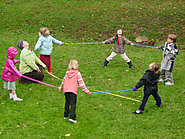
Multi-grade classrooms are trendy now. We have been using them for many years, and... they work. The multi-grade classroom provides great flexibility, and naturally encourages a sense of community within the whole school.
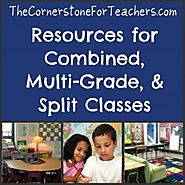
What's Here If you're teaching a split class (multi-grade or combined class) and need advice on classroom management and organization, you've come to the right

The mlutigrade teachers have
to deal with a class of students that often has a very wide
range of ages and consequently of learning abilities, all
together in the same room. Thus, most of the times it is not
feasible for the teacher to encounter teaching of the class
as a whole. Teachers should not use just the usual style of
teaching that they have been trained for, i.e. teaching a
single class of students in one subject at the time. The situation
in the multigrade classroom is completely different, not only
teachers have to teach more than one grade of students in
the same classroom, but also most of the times they have to
teach different subject to each grade. In order to be effective
multigrade schoolteachers must utilise very good planning
and develop teaching and learning strategies specially targeted
for their classrooms. Above all they must be dedicated and
willing to work hard to overcome the problems and the peculiarities
of multigrade education. They have to be flexible and use
various teaching methods (grouping, individualised instruction,
independent study, team-teaching, group project work, peer
tutoring etc.) according to their specific teaching needs
at the time. The use of such strategies not only supports
the educational work of the teachers and serves the national
curriculum goals, but also represent flexible methods that
encourage children to be independent and develop their personalities:
they gain the skills and attitudes of "learning to learn".
The purpose of this document is to present briefly the basic
teaching strategies used in most multigrade classrooms, their
main characteristics and provide simple instructions on how
multigrade teachers, as such participate at the MUSE project,
could implement these methods in their own classroom settings.
Several variations and alternations or developments on the
basic teaching strategies exist and the most important of
them are presented here also.
According to Collingwood's book, Multiclass Teaching in Primary
Schools, a handbook that was published in 1991 by the UNESCO
Office for the Pacific States, there are three main methods
to use for teaching in multigrade classrooms, namely:

This is an Prezi slide presentation on multi-grade-classrooms

This post was created by a member of Edutopia's community. If you have your own #eduawesome tips, strategies, and ideas for improving education, share them with us.

The multigrade classroom is an organizational pattern widely used in schools in the United States. Typically a feature of small-scale schooling, multigrade classrooms are today getting a closer look. This Digest, written for practitioners, parents, and policymakers, brings together recent information on the topic.

Explore Glenda Hartall-Hadwen's board "Multi-Grade Classrooms" on Pinterest, the world's catalog of ideas. | See more about Classroom, Differentiated Instruction and Work On Writing.

Alaska has the highest percentage of multigrade and multiage classrooms in the United States. Chances are pretty good that you will either interview for, or accept a multigrade teaching job if you work in the rural or remote parts of the state.

This paper suggests that multigrade classrooms lend themselves particularly well to promoting assessment that enhances learning, rather than assessment aimed solely at selecting pupils for promotion to the next grade. Some strategies to encourage assessment for learning in the multigrade classroom are explored. These include facilitating individual responsibility for learning, drawing on other children as an assessment resource and using assessment tasks that have learning potential. For such strategies to be used, teachers need training, guidance and exemplification relating to the formative purposes of assessment and criterion- and pupil-referenced assessment.
A multiage continuous progress program is, in practical terms, an
ideal. It is a goal toward which you travel bit by bit turning theory into
day-to-day success. But it involves great changes for everyone involved.
It requires time, patience, courage, and commitment (Johnson & Grant
1994, p.40).
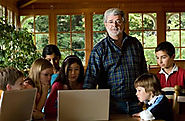
The wide range of academic ability in our classrooms underscores the need for a new approach to class organization.

When multi-age education is done correctly it is a joy. To begin with, older children help younger ones. The competent older children can reinforce their understanding of the content material while the younger ones have it taught to them in different ways. Sometimes another child can word a concept in a way that an adult can't, facilitating better understanding for both children involved. Multi-age classrooms also allow children to excel. With higher level materials on hand, and an infrastructure already in place to differentiate the instruction, higher functioning students can work past the prescribed curriculum. On the other hand multi-age classrooms allow a child in need of remediation to work specifically on the aspect of a concept that they are having problems mastering.This ability to "fill in" a child's gaps in knowledge leads to better and often, but not always, an acceleration in that child's learning curve. In other words, a well functioning multi-age classroom will be able to adapt to the needs of each child, promoting enrichment and remediation in the specific concepts that each child needs to work on. Some people worry that the different ages in one classroom will cause problems. Either older children will bully younger ones, older children will become immature from socializing with younger ones, or that having students working on different levels will promote taunting of lower functioning students. Although all of these are valid points, most of these problems can also occur in single aged classrooms as well. The problem is not with the intrinsic nature of a multi-age classroom itself, instead it is in the way the classroom, multi-age or not, is organized.The teacher of any classroom can alleviate many of these problems by doing a lot of community building exercises at the beginning of the year, and then periodically throughout the year, that focus on the individual worth of each child's natural strengths. This helps the children learn that the classroom environment is a place to focus on each person's growth, not their weaknesses. Children, especially at the younger grades, are very accepting and forgiving when when such attributes are modeled for them.
An eight year old and a six year old read
together on the floor of the classroom, holding a book between
them. The older child reads a page to the younger one, then invites
him to read. When the younger child has trouble with a word,
the older child says the first sound to help the little one out.
A seven year old reads a rough draft of a story she has written
to an eight year old. The older child says, "I like the
way your story ends." The younger child asks for help with
spelling.
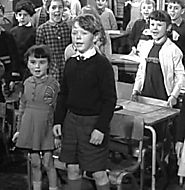
As fall rolls around, you may be looking for a preschool, or scheduling other activities for your little ones. One thing you may encounter is preschools with a "multi-age" classroom, or activities with a wide range of ages: where some programs are limited to children born within a few months of each other (age 2 -…
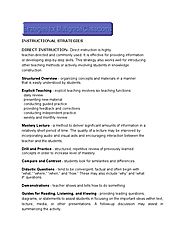
INSTRUCTIONAL STRATEGIES DIRECT INSTRUCTION- Direct instruction is highly teacher-directed and commonly used.It is effective for providing inform...
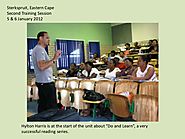
Sterkspruit, Eastern CapeSecond Training Session5 & 6 January 2012 Hylton Harris is at the start of the unit about “Do and Learn”, a very successfu…
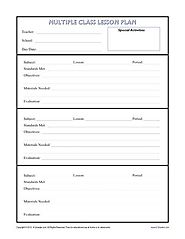
For secondary teachers, here’s a form for planning different classes and subjects for the day. There’s lots of room for details, such as objectives, standards and evaluation. What a great way to plan!

Many classrooms in BC are multigrade out of necessity and are a budgetary reaction to falling enrollments. As such, multigrade classes are often, sadly, considered a "make-do" situation where the conditions for both teacher and students can only be second-best (ie: second rate). Some of this anx is due to teachers and parents (and students) being unaware and unfamiliar with multigrade/multi-age philosophy…